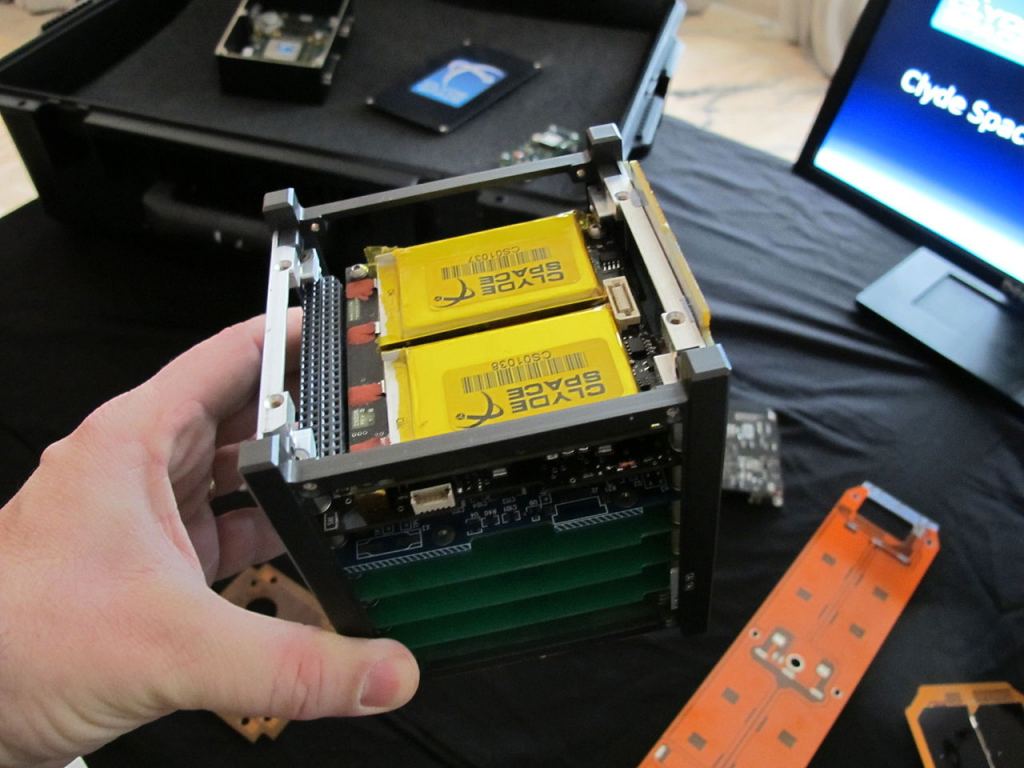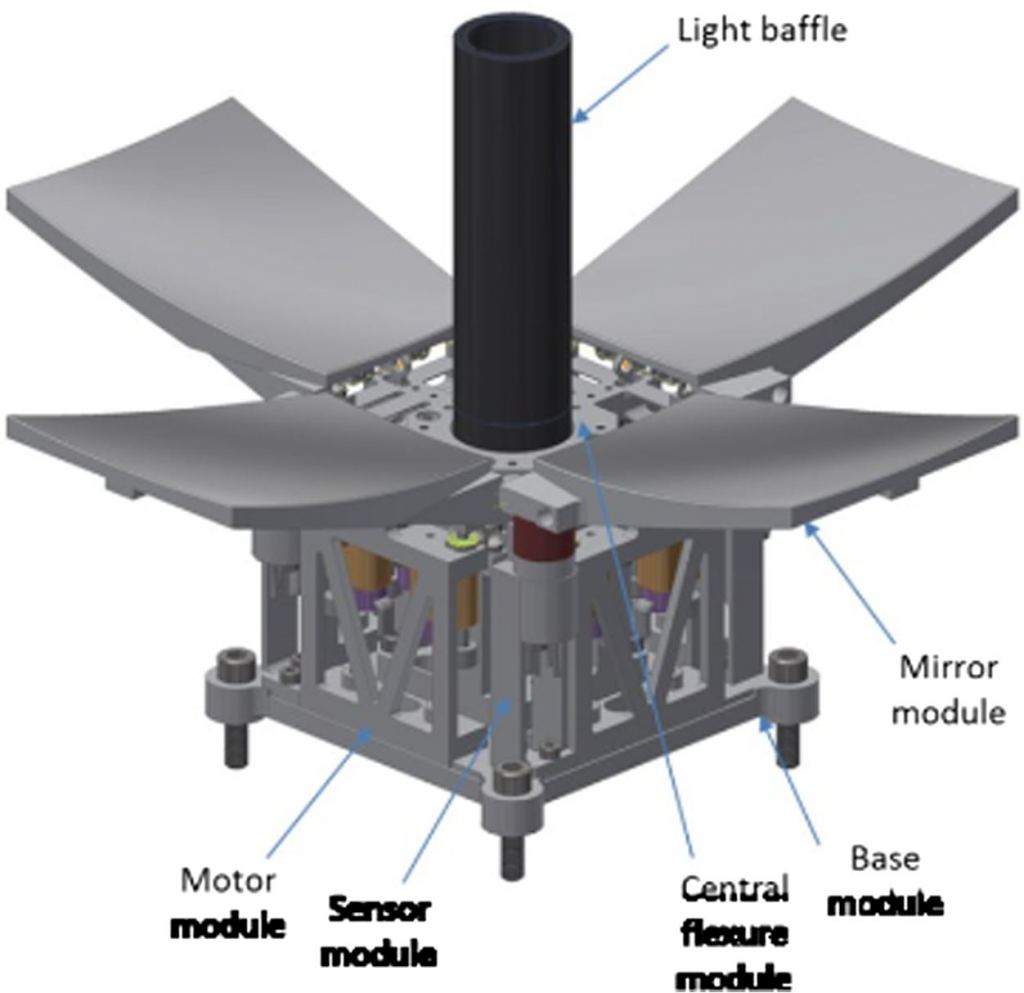Teeny Tiny CubeSats Could Have Deployable Mirrors Like James Webb
By Brian Koberlein
When you think of a space telescope, you probably think of ones such as the Hubble, which probes deep space using precision optics. But optical space telescopes are also pointed at Earth, giving us detailed views of everything from weather, to traffic patterns, to the movement of military troops. While Earth-focused telescopes are extremely useful, they can also be fairly large and expensive to launch into space. But that could change with a new proposed design for cube satellites.

A cube satellite, or CubeSat, is a type of tiny satellite standardized to weight and size. The basic size of CubeSats is known as a unit or “U,” which is a cube 10 centimeters on a side, though some CubeSats are multiple units in size. Their low mass and standard dimensions mean they can be launched in groups or constellations, which significantly reduces the cost. But this small size also limits the amount of optics you can fit into one.
For optical telescopes, the sharpness of your image depends upon the size of your aperture. The Hubble space telescope, for example, has a 2.4-meter wide mirror. If the mirror were smaller, Hubble’s images would be less detailed. That’s because of a wave effect known as diffraction. When waves of light pass through an aperture of a limited area, they can interfere with each other, blurring the resulting image. This diffraction limit reduces the resolving power of your telescope.
Since a 1U CubeSat can only be 10cm across, the optical aperture of a CubeSat can only be a few centimeters across. Given the diffraction limit, a CubeSat in orbit 500km above Earth would only be able to resolve features on Earth that are 3m wide at best or about 10 feet across. That’s not awful, but it is much lower than the resolution of modern commercial satellites. But a team of researchers has developed a design that could improve that limit significantly, and they do it using the same trick used by the James Webb Telescope.

The James Webb Space Telescope has a primary mirror that’s 6.5 meters across. When launched later this year, it will provide far more detailed images than the Hubble ever could. The problem is that Webb will be launched on an Ariane 5 rocket, which is only 5.4 meters wide. So the Webb’s mirror has to be folded to fit. Only after launch will it unfold to its full size. The CubeSat design uses the same approach. Four folded mirrors allow the satellite to fit within 1U while providing a larger aperture for the CubeSat when unfolded after launch. This is much easier said than done. Folding and unfolding mirrors is easy, but to work they have to be aligned with extreme precision. This is difficult to do even with Webb’s 10 billion-dollar budget, so how do you do it for a cheap CubeSat?
The team proposes doing this in stages. After launch, the CubeSat mirrors could be unfolded and placed into a “close enough” position, then using active and adaptive optics to sharpen the image. The use of adaptive optics would also allow the CubeSat to compensate for heating and cooling effects, which could shift the mirrors out of alignment. Base on their initial studies, the team estimates a 1U CubeSat could achieve a resolution of 80 centimeters when orbiting at 500 kilometers, which is in the range of current commercial satellites.
The low cost of CubeSats means that CubeSat telescopes could make real-time high-resolution imaging of Earth much more cost-effective. A constellation of them could track both long-term and sudden changes on our planet. It would be tremendously helpful for things such as natural disasters, where information can be limited. But it would also mean that these tiny satellites would always be watching with a view from above.
Reference: Schwartz, Noah, et al. “High-resolution deployable CubeSat prototype.” Space Telescopes and Instrumentation 2020: Optical, Infrared, and Millimeter Wave. Vol. 11443. International Society for Optics and Photonics, 2020.
The post Teeny Tiny CubeSats Could Have Deployable Mirrors Like James Webb appeared first on Universe Today.

May 30, 2021 at 10:49PM
via Universe Today read more...

Post a Comment